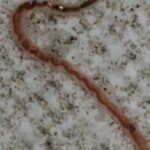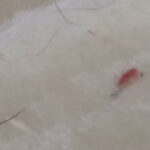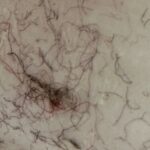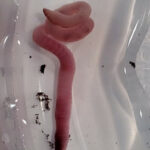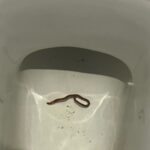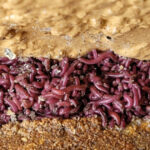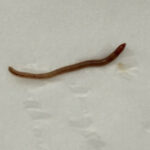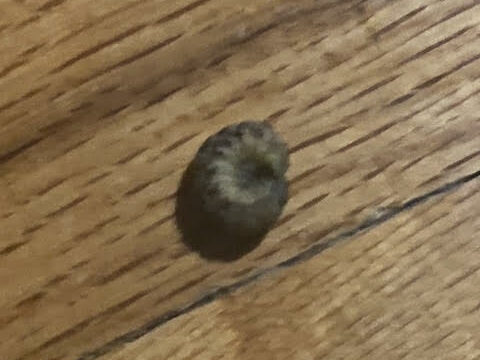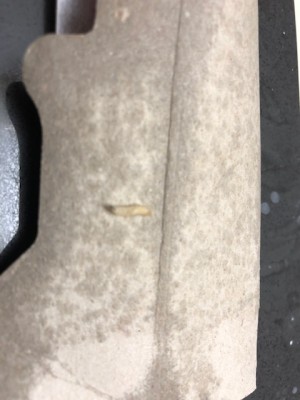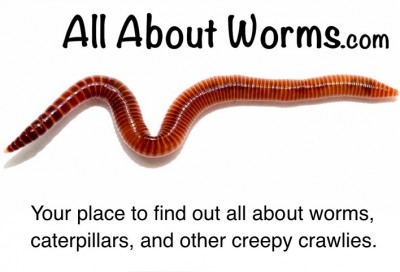
Red, “free-moving, thread-like” worms of varying lengths were discovered in the bathroom of this concerned woman. She says they look “dangerous and unpredictable” given their speed, and worries that they might be parasitic to humans.
Our reader adds that the thread-like worms varied in length, and that their bodies had two rounded ends. She states that the worms “have sharp senses”, though this is mere speculation. Furthermore, our reader ‘feels’ that the worms have a “good survival capacity” and are “resistant to cleaning chemicals,” she has not informed us if this is actually the case. She also says that “with the passage of time” the worms were able to increase their body size to a “much higher extent”, and that while she assumed they could only survive in water, she then found one of the worms moving fast across a dry surface.
The worms our reader found were most likely some type of bloodworm. ‘Bloodworm’ is actually an umbrella term for a variety of species of worms. There are three primary types that people refer to when they use the term ‘bloodworm’: glycera bloodworms, red midge fly larvae, and tubifex worms. As our reader did not provide any photos, it becomes difficult to say exactly which one they might be. We have covered bloodworms numerous times, and to find the detailed information our reader requests, we recommend reading any of these articles that were recently written about blood worms:
Glycera worms: Rearing or Cultivating Glycera dibranchiata (Bloodworms)
Red Midge Fly larvae: Red Worms in Man’s Toilet are Midge Fly Larvae
Tubifex worms: Red, String-Like Worm in Bathroom Sink is a Tubificid Worm (Tubifex Tubifex)
Naturally, we will still provide some general information about bloodworms. Neither of the three species listed above are parasitic or harmful to humans. However, glycera worms do pack a painful bite, and whilst they produce venom, it is not enough to be harmful to humans, but simply produces a stinging sensation. Glycera worms, as well as red midge fly larvae are often used as fishing bait, and can actually be bought in bulk. Red midge fly larvae are also a popular purchase for fish owners, who feed them to their pets. This is because the red midge fly larva, like the red tubifex worm, produces hemoglobin, the same oxygen-carrying protein that humans produce, which is what gives them the ability to survive in low-oxygen conditions, makes their bodies red in color and also what makes them rich in iron, which is beneficial for the diet of domestic fish.
Now, in terms of their size, glycera worms are by far much larger than the other two; the worms our reader found are more likely to be one of the two latter species of bloodworm, either the red midge fly larva or the tubifex worm. We would guess that the worms our reader found were red midge fly larvae, given their minuscule size. On the other hand, their ability to move on dry surfaces quickly has us second-guessing ourselves, though there are no other worms of the same description that would be able to survive in aquatic habitats and on land, and are of the same minuscule size.
Regardless, whichever bloodworm these worms are, preventing them from coming back is a simple matter of cleaning one’s toilets (and drains) regularly. This will remove whatever detritus and bacteria they are attracted to. Of course, in the case of the tubifex worms, some of them simply come up from people’s toilets for air, as they cannot sustain in low-oxygen conditions forever. But in those cases, infestations do not occur, as it is usually just one or two tubifex worms that surface.
To conclude, the red, thread-like worms our reader found in her bathroom are bloodworms, and are most likely red midge fly larvae, though we cannot be completely certain given the lack of a photograph. If our reader wishes to, she may send in some photos of these worms if she finds them again, so we may be able to provide a confident identification of the worms. Either way, our reader can at least rest assured that these worms are not parasitic!
All About Worms is always free, always reader-supported. Your tips via CashApp, Venmo, or Paypal are appreciated! Receipts will come from ISIPP Publishing.



